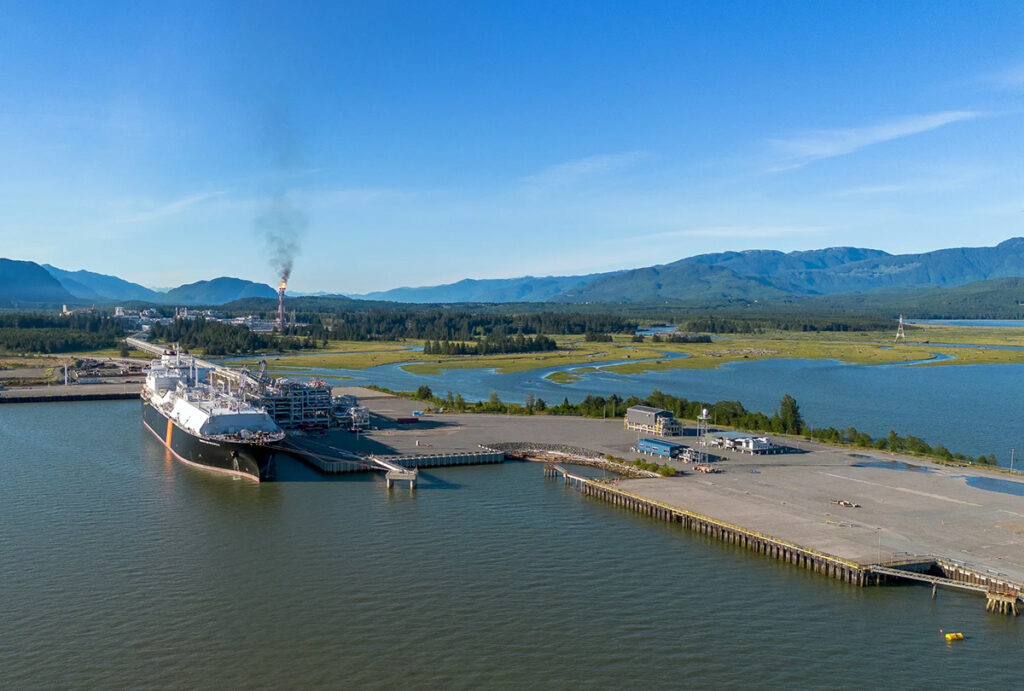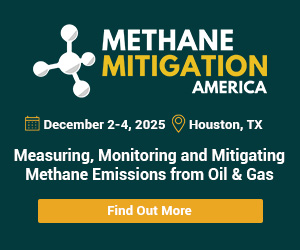By Brian Platt and Laura Dhillon Kane

An LNG carrier is loaded at the LNG Canada docks in Kitimat, British Columbia. Photographer: James MacDonald/Bloomberg
Prime Minister Mark Carney wants to speed construction of a major expansion of LNG Canada, a large-scale liquefied natural gas export project on Canada’s west coast.
Shell Plc and its Asia-based partners are considering whether to go ahead with a doubling of LNG Canada’s capacity. The prime minister announced Thursday he plans to smooth the path by including it on a list of projects eligible for fast-track acceptance, confirming an earlier report by Bloomberg News.
The list, which Carney has referred to as a “first tranche,” includes projects the government sees as nationally important and wants to expedite. It’s part of an effort to respond to US tariffs by stimulating construction activity, boosting Canada’s economy and increasing exports to non-US trade partners.
The LNG Canada expansion already has federal approval, but Shell and its partners — Petronas, PetroChina Co., Mitsubishi Corp. and Korea Gas Corp. — have not yet made a final investment decision.
The facility’s first phase, which received an investment decision in 2018, finally began shipping gas a little more than two months ago. The LNG Canada consortium holds a 40-year export license that allows it to initially export as much as 14 million metric tons of LNG per year. Phase two would increase capacity to 28 million metric tons, making it the second-largest facility of its kind in the world, Carney said.
“This will directly help transform Canada into an energy superpower,” he said. “It will diversify our trading partners, help meet global demand for secure, low-carbon energy and support tens of thousands of new high-paying careers.”
But there are lingering questions about how the expanded facility would be powered and whether it fits within carbon emission limits set out by the governments of Canada and British Columbia.
The other projects Carney announced Thursday are also in more advanced stages, and were chosen because they can likely begin construction soon. They’re being referred to the government’s new “major projects office,” which will help achieve any remaining regulatory approvals and secure the necessary financing.
The projects are:
- Darlington New Nuclear Project, a small modular reactor project in Ontario
- Contrecoeur Terminal Container Project, an expansion of the Port of Montreal
- McIlvenna Bay Foran Copper Mine Project in east-central Saskatchewan
- Red Chris Mine expansion in northwest British Columbia
Carney said the five projects would generate more than C$60 billion ($43.4 billion) for the Canadian economy.
The prime minister said federal incentives for LNG Canada under discussion were “very modest” compared to the overall capital cost. The amount of public money offered to other projects will vary, he said, but that privates-sector investment would far outweigh any taxpayer support.
A spokesperson for LNG Canada said it was “supportive of efforts underway to advance natural resource projects and other projects of national importance.” The proposed expansion already has key permits and approvals, including provincial environmental assessment certificate, the spokesperson added.
Crude Pipeline
The list did not include an oil pipeline, a disappointment to some in Alberta, Canada’s main crude-producing province. So far, no pipeline company has come forward publicly with a proposal. Still, Carney stressed that a second tranche of projects will be announced by mid-November.
Environmental laws brought in by Carney’s predecessor, Justin Trudeau, including a ban on oil tankers off BC’s north coast, have been seen as barriers to pipeline projects. But Carney noted that new legislation gives his government the power to adjust regulations to allow projects in the national interest to proceed.
The announcement is positive for the shares of engineering companies, TD Cowen analyst Michael Tupholme said in a note to investors. Canadian firms including AtkinsRealis Group Inc. and Aecon Group Inc. are already involved in projects such as the Darlington nuclear buildout and the Montreal port expansion.
Shares of Aecon were up more than 8% and AtkinsRealis rose more than 6% in afternoon trading in Toronto on Thursday, making them two of the biggest gainers in the S&P/TSX Composite Index. Bird Construction Inc. was up more than 5%.
Carney also outlined infrastructure plans that need more time in development before they can be put through the major projects office. In August, the government named Dawn Farrell, the former CEO of Canadian power producer TransAlta Corp., as head of that office.
One of those projects in earlier stages is the Pathways carbon capture system in Alberta’s oil sands, which Carney said may be part of a “grand bargain” that allows new pipelines to be built. The Pathways project is “a necessary condition to unlock those pipelines,” he said.
The other projects in earlier stages are:
- Wind West Atlantic Energy, an offshore wind energy project off Canada’s east coast
- Arctic Economic and Security Corridor, an all-weather road infrastructure project to support northern critical minerals mines
- Port of Churchill expansion in northern Manitoba
- Alto High Speed Rail project connecting Toronto and Quebec City.
Carney also directed the major projects office to prioritize getting critical minerals projects to final investment decisions, including in Ontario’s so-called Ring of Fire region. As well, he tasked it with developing a “Canadian sovereign cloud” to build computing capacity and data centers.
“We’ve built big things before as Canadians, and we will again. Now, this is a moment of big disruption and profound change. We bear the same responsibilities as those who came before us, and we should hold the same ambitions,” Carney said.
— With assistance from Thomas Seal
(Adds details from Carney news conference starting in the seventh paragraph.)
Share This:




 CDN NEWS |
CDN NEWS |  US NEWS
US NEWS 
































COMMENTARY: How Fossil Fuels Make Earth More Livable Than It’s Ever Been – Alex Epstein